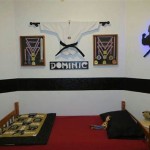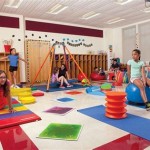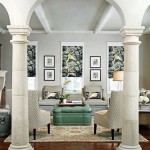How To Decorate Study Room Walls
A well-decorated study room can significantly impact focus and productivity. Wall decor plays a vital role in creating a conducive learning environment. This article outlines various strategies and ideas for decorating study room walls to maximize both aesthetics and functionality.
Creating a Functional Layout
Before decorating, consider the room's layout. Identify the primary study area and plan the wall decor accordingly. The wall facing the desk often serves as the focal point and benefits from visually stimulating or motivational elements. Other walls can house storage solutions or less distracting decor.
Choosing a Color Palette
Color psychology plays a crucial role in setting the right mood. Neutral colors like beige, gray, and off-white create a calming backdrop conducive to concentration. Soft shades of blue and green can promote tranquility and focus. Brighter colors, used sparingly, can add pops of energy and inspiration. It's advisable to avoid overly stimulating colors like bright red or orange, which can be distracting.
Incorporating Inspirational Elements
Motivational posters, quotes, or artwork can provide visual inspiration. Select pieces that resonate with personal goals and aspirations. Framing these elements adds a polished look and helps them blend seamlessly with the overall aesthetic. Avoid overcrowding the walls; a few well-chosen pieces have a greater impact than a cluttered display.
Utilizing Functional Wall Decor
Wall decor can be both aesthetically pleasing and functional. Chalkboard paint or whiteboard sheets offer a space for brainstorming, note-taking, and visual reminders. Corkboards or magnetic boards provide areas to pin important documents, schedules, or inspirational images. Floating shelves can display books, awards, or decorative objects while keeping the desk clear.
Showcasing Personal Interests
Incorporating personal interests into the study room decor can enhance motivation and create a more personalized space. For example, a framed map can inspire a travel enthusiast, while a musician might display framed sheet music or a favorite instrument. These personal touches make the study room a more inviting and enjoyable space to spend time in.
Optimizing Lighting
Proper lighting is essential for a productive study environment. Consider a combination of ambient, task, and accent lighting. Wall-mounted sconces or strategically placed lamps can provide focused task lighting. String lights or LED strips can add a touch of ambiance and create a more relaxed atmosphere. Mirrors can be strategically placed to reflect natural light and brighten the room.
Integrating Nature
Bringing elements of nature into the study room can have a calming effect. Indoor plants can purify the air and add a touch of greenery. Botanical prints, nature photography, or even a small wall-mounted fountain can create a sense of tranquility and connection with the outdoors.
Creating a Gallery Wall
A gallery wall can be a dynamic and visually interesting way to display artwork, photographs, and other decorative items. Plan the layout carefully before hanging anything on the wall. Use a mix of frame sizes and styles to create a cohesive yet eclectic look. Maintain a consistent color scheme or theme to tie the gallery wall together.
Using Wallpaper Strategically
Wallpaper can add a significant impact to a study room. Choose a pattern or design that complements the overall style and color scheme. Consider using wallpaper on a single accent wall to create a focal point without overwhelming the room. Geometric patterns can add a modern touch, while floral designs can create a more calming and traditional atmosphere.
Employing Texture and Dimension
Adding texture and dimension to the walls can create visual interest. Textured wallpaper, 3D wall panels, or even a tapestry can add depth and character to the room. These elements can also help to absorb sound, creating a quieter and more focused study environment.
Maintaining a Clutter-Free Environment
While decorating the walls can enhance the study room, it's crucial to avoid clutter. Too many decorations can be visually distracting and negatively impact focus. Regularly declutter and organize the walls to maintain a clean and organized space. A minimalist approach often promotes a sense of calm and allows for better concentration.
Regularly Updating the Decor
Personal tastes and preferences change over time. Regularly updating the study room decor can help maintain a fresh and inspiring environment. Changing artwork, rearranging the gallery wall, or adding new elements can revitalize the space and boost motivation.

10 Study Room Decoration Ideas For Your Home Designcafe

Brilliant Study Room Wall Decoration Ideas Design Cafe

Brilliant Study Room Wall Decoration Ideas Design Cafe
What Are Some Ways To Decorate A Study Room Quora

10 Study Room Decoration Ideas For Your Home Designcafe

How To Decorate Study Room 10 Decoration Ideas Make Work Or Fun

How To Decorate And Furnish A Small Study Room

19 Cute Kids Study Room Design Ideas Extra Space Storage

The Top 6 Tips To Beautify A Study Room Roofandfloor Blog

The Top 6 Tips To Beautify A Study Room Roofandfloor Blog
Related Posts







